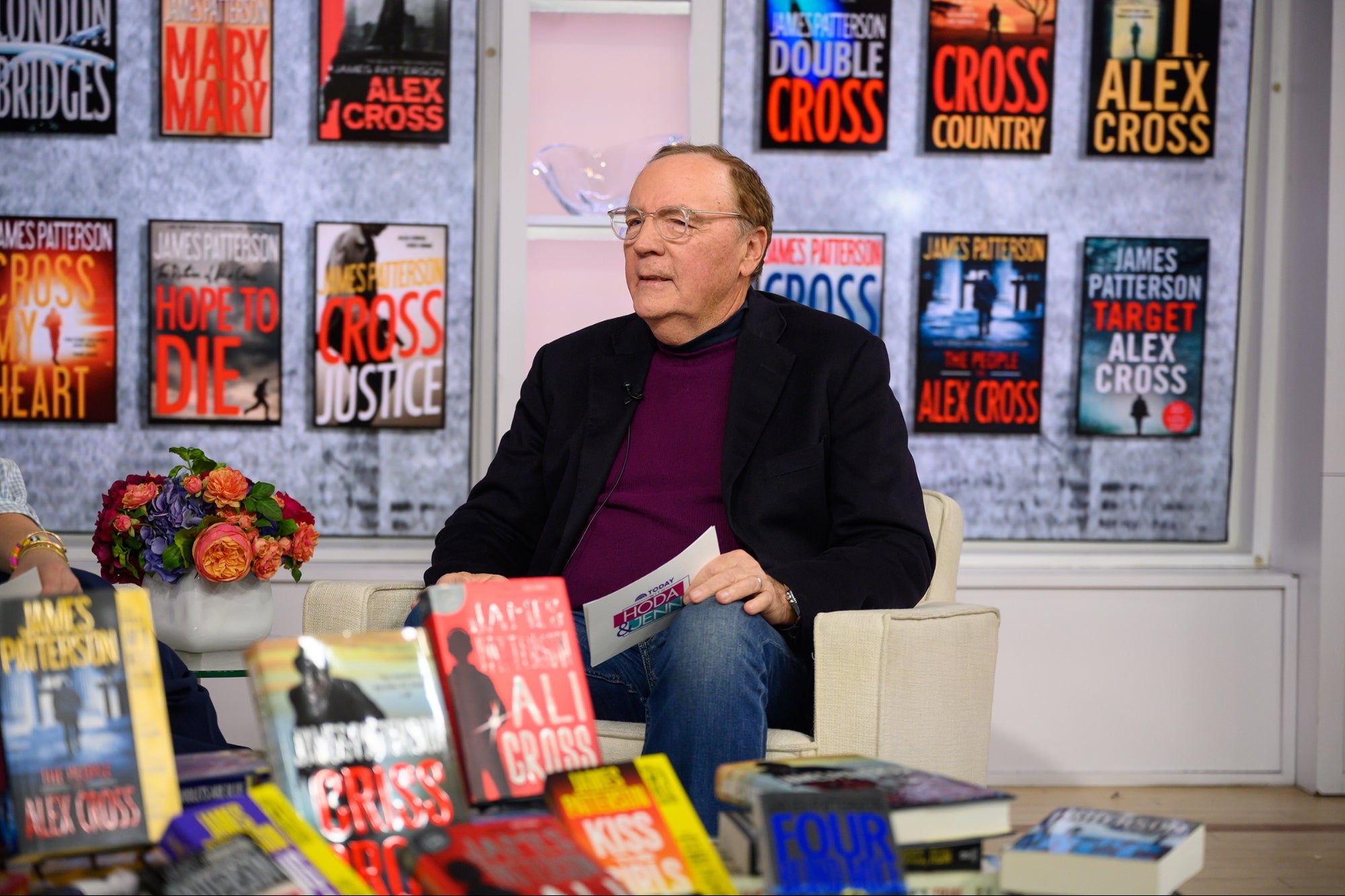How to Write a Book Like James Patterson

Opinions expressed by Entrepreneur contributors are their own.
James Patterson, author of thrillers like Along Came a Spider (1993), Kiss the Girls (1995) and the 2006 to 2020 Alex Cross series (all published by Little, Brown and Company), has sold more than 300 million books and has a perpetual spot on the highest-earning author list. But his success is no happy accident; he’s sustained this level of sales throughout dozens of novels and over four decades because he has perfected a very complicated craft. But put simply, he writes page-turners that people want to read — books that might not change the reader’s perception of the world as “high art” writing might, but do something that’s even more important, at least for most authors…
His books sell.
After studying the 74-year-old author’s work, as well as his commentaries on writing, I’ve distilled nine lessons that any aspiring writer can apply.
1. Short chapters keep the plot moving
If you’ve never read a Patterson book, its unconventional structure might take you by surprise. For example: although there’s no “right” way to write a chapter, most readers expect a word count of somewhere between 2,000 and 4,000 words. Patterson, however, regularly writes chapters that are only 250 to 500 words. These are usually no more than a couple of pages, so can be consumed quickly — even throughout a busy professional’s day.
2. Plot is central to any page-turner
In addition to short chapters, Patterson keeps plot at the center of his work. With characters ranging from crime-solving detectives to teenage mutants, his stories have one thing in common: they are exciting and hard to put down, and for good reason; if readers aren’t invested in what comes next, books are likely to become “DNF”s (did not finish). No writer wants that. The Newburgh, New York native’s compelling stories not only hook a reader until the end, but also make sure she or he comes back for the next book in a series, or another standalone. Keep in mind, as the author has said, “Everything you write should be moving your story forward”, adding that for him, the best way to do this is to create a detailed outline before setting to work.
Related: How to Write a Book (and Actually Finish It) in 5 Steps
3. Don’t over-write
Patterson typically keeps plotlines as bare-bones as possible. There aren’t long sections of exposition — few to no paragraphs of detailed descriptions or painting visuals with words. Instead, in addition to being plot-focused, his work is dialog-driven. This has two effects: not only does it allow for volumes to be read faster, but also effectively advances a plot. Think of his short sentences and chapters as heartbeats — all propelling the drama and suspense.
4. A convincing story takes research
Writing numerous titles usually means venturing out of your informational comfort zone, which requires a secret ingredient…research. Patterson has penned many thrillers describing lives he’s never lived, but to write about detectives and NYPD officers convincingly, to name a few examples, requires a good deal of work. That way, he can express with authority and readers have fewer problems trusting his credibility.
Related: A Simple 4-Step Process for Writing Your First Book in 100 Days
5. Complex characters and plotlines actually make writing easy
Patterson’s style has been criticized by some authors, including Stephen King, who called him “a terrible writer”. Still, it’s hard to argue against 300 million copies sold. The simple truth is that writing doesn’t have to be difficult. Everything about Patterson’s books points to a belief that telling a story can be easy if you have complex characters and an engaging plot to involve them in. He doesn’t embellish; tells stories as plainly as possible. The inherent value is in the ideas, not the style.
6. Leave readers guessing
According to Patterson, “One of the biggest secrets of suspense is setting up questions that the readers must have answered”. That might call for plot twists along the way and dropping the tiniest of clues. Readers are smart people. If you do too much (reveal your hand, as it were), they will immediately suss out the direction of a plotline and lose interest. So, be tricky. Sprinkle some red herrings in the prose…hint at one resolution and then quickly turn in another direction. And if you can keep such surprises contained until the climax, the payoff will be tremendous.
7. A great protagonist needs a great antagonist
When it comes to main characters, Patterson is deeply capable of penning both sides of morality; his antagonists are just as compellingly twisted and sinister as his protagonists are strong-willed and heroic. While the formers’ goals might be stomach-turning, their motives are justified to readers. In some cases, they might even sympathize with villains. He doesn’t assess badness as simply the product of being a bad person, he writes his ne’er-do-well as wickedly understandable.
Related: Here’s What It Takes To Write A (Great) Book
8. Embrace writer’s block
Patterson admits that being creatively stuck is a very real obstacle, but has also found that it can be powered through. One solution he’s offered is, “Do not sit there like, ‘Oh I don’t feel like it today. I don’t feel like it tomorrow.’ Feel like it! Do it!” Sometimes bullying yourself into a set word count for a day might be the only way to get through a block. The words don’t have to be great, either; they just need to be on the page. (That’s what revisions are for). It might not be pleasant and it will take focus, but eventually, you’ll develop momentum and get through.
9. Write for a big audience
Pop music might not be “high art”, but it dominates the charts. This seasoned author unapologetically does the same thing with his books. When it’s time to create a plotline for a new one, he actively considers what readers will want to read. Bestsellers can’t be niche — they must relate to a majority. In addition, he’s committed to volumes that have appeal to both sexes. (Since 70% of his readers are women, this is a particularly smart move).





